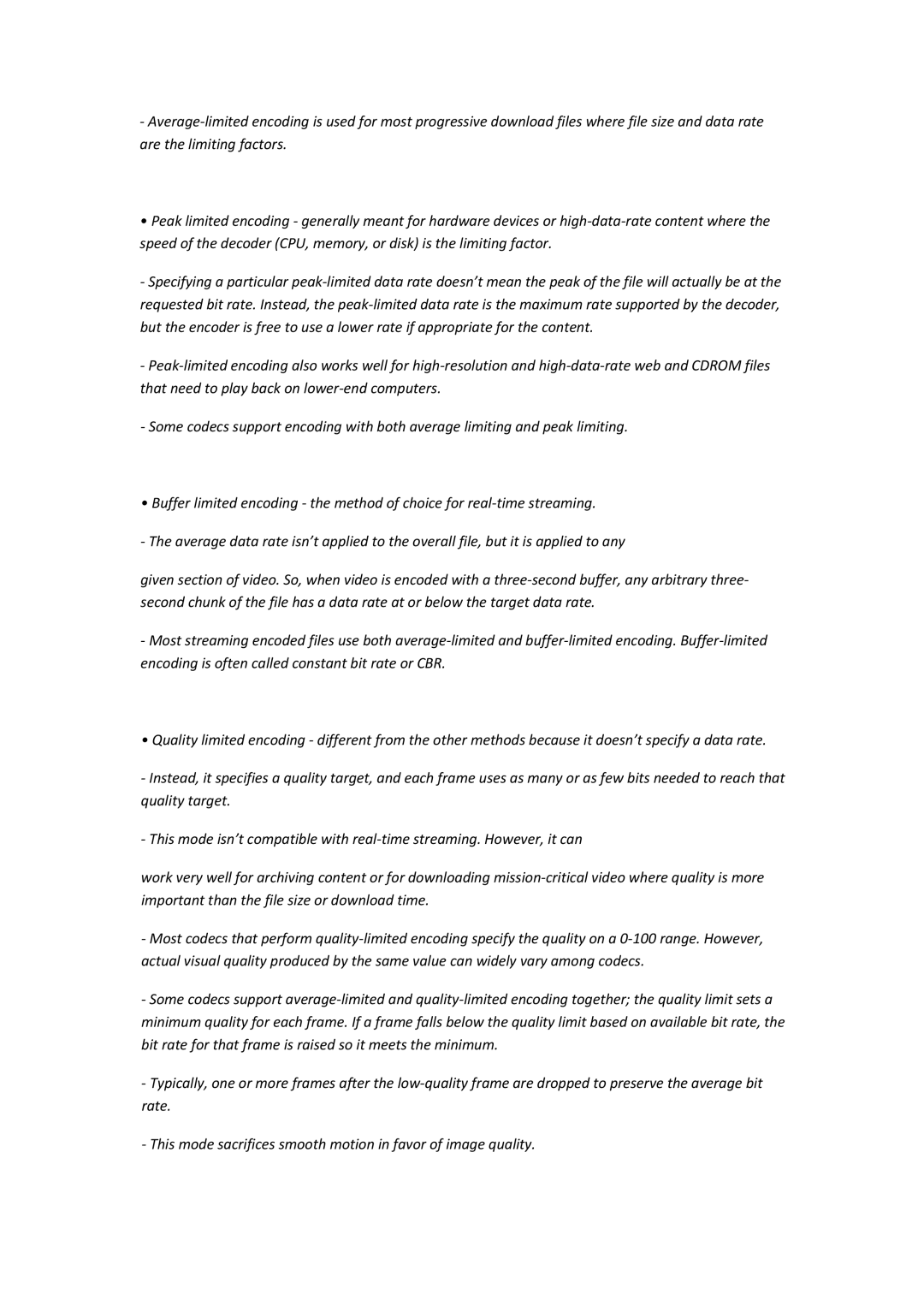‐Average‐limited encoding is used for most progressive download files where file size and data rate are the limiting factors.
•Peak limited encoding ‐ generally meant for hardware devices or high‐data‐rate content where the speed of the decoder (CPU, memory, or disk) is the limiting factor.
‐Specifying a particular peak‐limited data rate doesn’t mean the peak of the file will actually be at the requested bit rate. Instead, the peak‐limited data rate is the maximum rate supported by the decoder, but the encoder is free to use a lower rate if appropriate for the content.
‐Peak‐limited encoding also works well for high‐resolution and high‐data‐rate web and CDROM files that need to play back on lower‐end computers.
‐Some codecs support encoding with both average limiting and peak limiting.
•Buffer limited encoding ‐ the method of choice for real‐time streaming.
‐The average data rate isn’t applied to the overall file, but it is applied to any
given section of video. So, when video is encoded with a three‐second buffer, any arbitrary three‐ second chunk of the file has a data rate at or below the target data rate.
‐Most streaming encoded files use both average‐limited and buffer‐limited encoding. Buffer‐limited encoding is often called constant bit rate or CBR.
•Quality limited encoding ‐ different from the other methods because it doesn’t specify a data rate.
‐Instead, it specifies a quality target, and each frame uses as many or as few bits needed to reach that quality target.
‐This mode isn’t compatible with real‐time streaming. However, it can
work very well for archiving content or for downloading mission‐critical video where quality is more important than the file size or download time.
‐Most codecs that perform quality‐limited encoding specify the quality on a 0‐100 range. However, actual visual quality produced by the same value can widely vary among codecs.
‐Some codecs support average‐limited and quality‐limited encoding together; the quality limit sets a minimum quality for each frame. If a frame falls below the quality limit based on available bit rate, the bit rate for that frame is raised so it meets the minimum.
‐Typically, one or more frames after the low‐quality frame are dropped to preserve the average bit rate.
‐This mode sacrifices smooth motion in favor of image quality.
